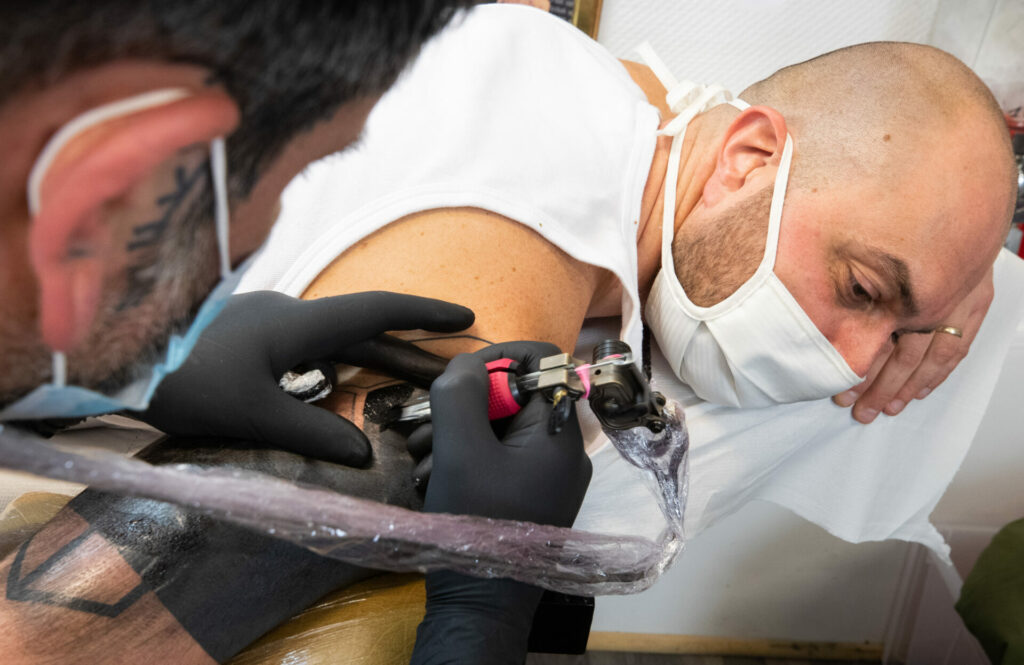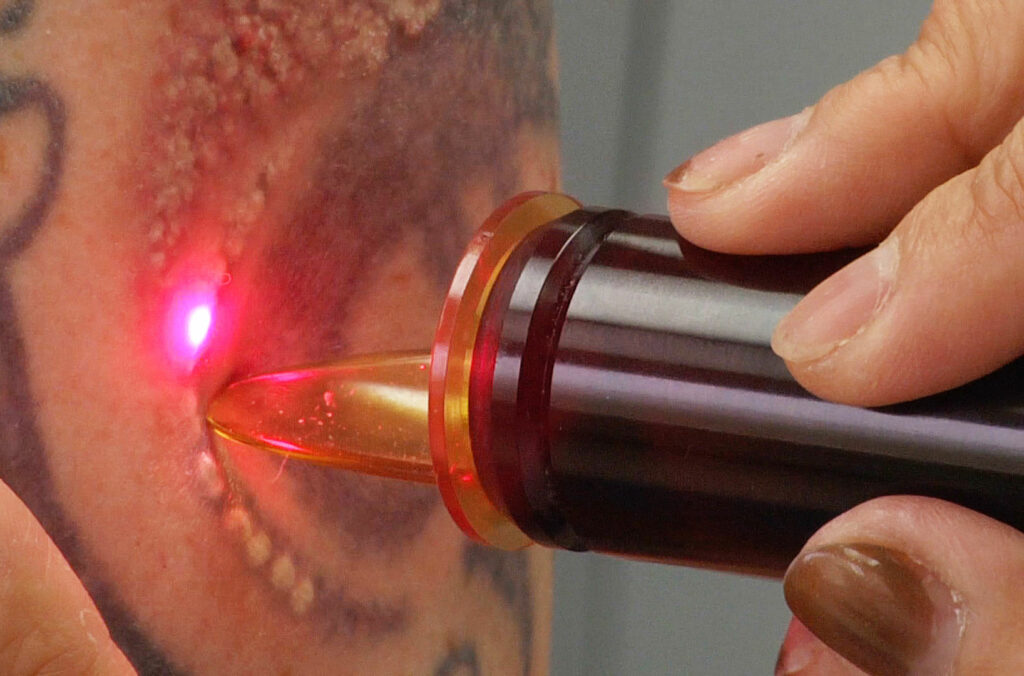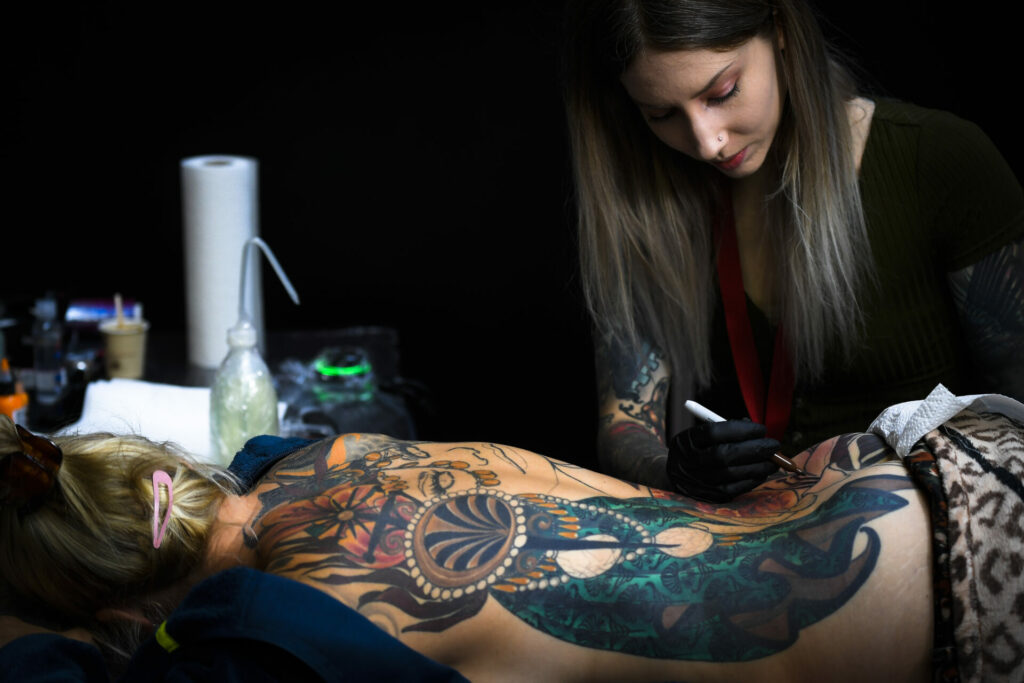While the trend for tattoos continues, another trend in the sector is also growing in Belgium – the removal of tattoos.
There are no official figures to support the trend – as the Belgian Health Service does not keep count of tattoo removals – those in the industry executing the delicate procedures are not talking only about an increase in removals, but actually "booming.”
Some people, like Brussels resident Aurélie, are choosing to have selected areas of their body art removed. In the 1990s, when she says the design was “trendy”, she had a tribal tattoo etched onto the lower part of her back. Over the following two decades, her tastes changed, and she is now having her first design removed while keeping her subsequent ones.
"After getting this tribal design, I continued to get tattooed, but in a different style," Aurélie explains. "I switched to realism. My tribal design no longer went with the rest. So, I decided to have it removed."
As previously reported, a restriction on hazardous chemicals contained in mixtures for tattoo inks and permanent make-up entered into force in the EU as of 4 January 2022. The ban is based on studies showing evidence of allergies and skin problems due to tattoos and scientific and socio-economic impact assessments done by the European Chemicals Agency (ECHA).
Changes in tattoo trends
Many believe that tattoo choices made in their youth no longer fit with the lifestyles they have now, and want all their tattoos completely removed.
Françoise Guiot, a dermatologist in Grez-Doiceau who is equipped with a tattoo removal laser says: "We receive daily requests for removals." She is not alone. The waiting rooms at the CHU in Liège and the DocTATOO dermatological centres in Tournai and Brussels have all seen an increase in people wishing to clear their skin.

Credit: Belga / Benoit Doppagne
“We estimate the tattooed population at around 500,000 Belgians,” says Philippe Paquet, dermatologist at the CHU Liège.
“Knowing that about 30% of them express regret and that a tenth decides, in the end, to remove their tattoo, we could be looking at least 50,000 people seeking the procedure.”
Some of those making the decision cite the inferior quality of the tattoo they received, mainly because of the decision in their past to use an unregistered or underground tattoo artist.
"Wanting to rectify a tattoo artist's mistake is one of the great recurrences we hear from people making this decision," explains Mathieu Guennaoui, of DocTATOO.
More tattoos, more mistakes
"The more we see an increase in the number of tattoos, the more we see mistakes," says Bruno Menei, President of the association that represents Belgium’s French-speaking tattoo artists. He regrets the rise in tattoo artists who operate illegally, a consequence of the rise in demand, and the substandard work many carry out.
Mainly it is the decision of the person being tattooed that eventually needs to be reversed, perhaps due to the circumstances of the original event, says dermatologist Françoise Guiot. "I help people who have been tattooed while drunk, others who have been caught up in the passion of a relationship and have had a former partner’s name or even face tattooed on their skin.”
Another reason for the “explosion” in removals is the idea that tattoos are no longer permanent, an attitude based on the relative ease, accessibility and much-improved technology of tattoo removal.
“It is a typical trend in our society today,” says Françoise Guiot. “We consume, we regret, and then we try and solve the problem. If we can pay for it to go away, we will – if we can.”
Tattoo removal not cheap
Experts insist that laser tattoo removal is not a miracle solution. It is neither immediate, nor cheap. Aurélie has already been through 40 sessions to remove her tribal tattoo, at a cost of between 240 to 260 euros per session.
At DocTATOO, the average duration of a treatment varies between one and two years, at a price of 100 to 200 euros per session, depending on the size, with the price rising to 300 euros per session for large tattoos. “The price is enough to make lie the myth of tattoo removal being a one shot, easy fix,” says Françoise Guiot.

Credit: Belga / Olivier Matthys
“However, technological developments have led to much more satisfactory final results than before, almost perfect and have reduced the waiting time between sessions from two months, to almost only one.”
Despite advances in technology which have reduced the exposure time to the lasers and reduced burns, the procedure remains painful. The laser effectively has to burst the pigment particles in the skin.
Related News
- First 'Belgian International Tattoo' military festival to be launched in Mons
- Artistic space in Molenbeek becomes inclusive hub for tattoo artists
"There is an explosion effect in the dermis," explains Philippe Paquet. "After a session, we see bruises and scabs, and the patient has to take care of the affected area for about ten days, but in the end, the skin recovers."
Finalised removal can be hit or miss
The final result depends on the colour of the tattoo. Donatienne Carton from DocTATOO in Tournai says that this is particularly problematic in cases of permanent makeup tattoos like those on eyebrows.

Tattoo removal. Credit: James Mutter / Wikimedia Commons
“They are usually brown, or a mixture of colours, including white,” she says. “However, when you shoot with the laser on white, you risk oxidising the pigments and that turns it green, which is a colour that is difficult to remove, just like blue. Black, on the other hand, is the easiest.”
Where the pigment goes after it has been burst is a question which experts struggle to answer, although what is clear is that once you put tattoo ink in your skin, it remains in your body forever.
“These pigment particles recovered by the lymphatic system and cells called macrophages, which cleanse the waste products of our body," explains Philippe Paquet. "It's not clear if they accumulate in the lymph nodes or if they are evacuated.”

